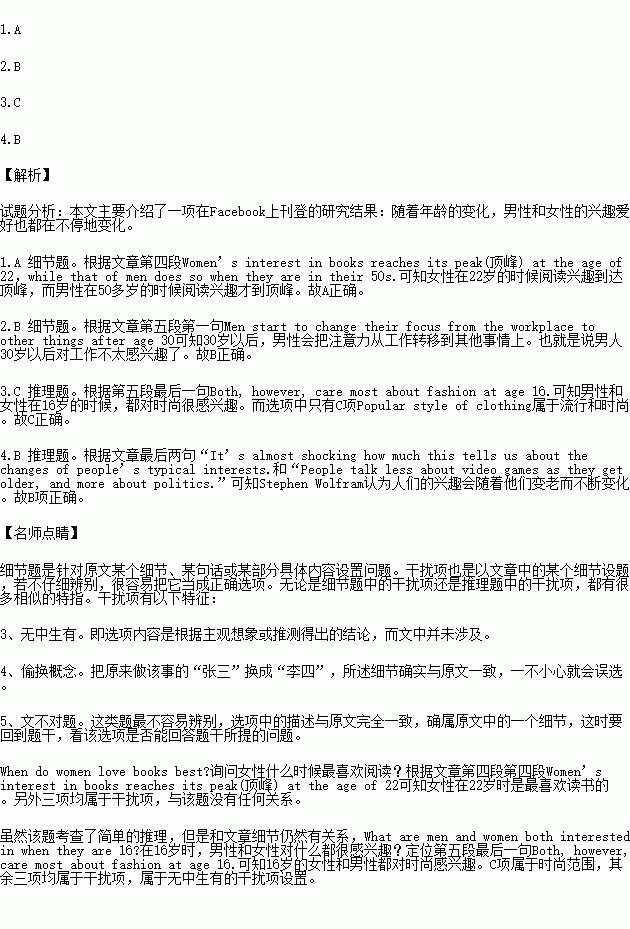题目内容
An interesting study posted on Facebook recently shows how men and women develop new interests as they mature(成熟).
While women tend to take exercise seriously from the age of 34, men will wait until their 45th birthdays before working hard to get in shape.
The average woman spends more time talking about sports, politics, career and money as she gets older.
Women’s interest in books reaches its peak(顶峰) at the age of 22, while that of men does so when they are in their 50s.
Men start to change their focus from the workplace to other things after age 30, while women do not do so until eight years later. Both, however, care most about fashion at age 16.
The research used anonymous(匿名的) data donated by thousands of Facebook users, recording the statuses, ‘likes’ and ‘interests’ they had posted on their profiles.
It found the average woman talks about television most at 44, while men peak much younger, at age 31.
Men are also most likely to see a film in a cinema at age 31, while women go out to see films most when they are only 19.
Men are most interested in travel at 29, women at 27, while women talk most about food and drink at 35, and men at 38.
And if you are middle aged, a safe topic for any audience is the weather, which is a key interest for many as they approach 60.
Stephen Wolfram, the British scientist who carried out the research, says, “It’s almost shocking how much this tells us about the changes of people’s typical interests.
“People talk less about video games as they get older, and more about politics.”
1. When do women love books best?
A. At the age of 22. B. At the age of 50.
C. At the age of 30. D. At the age of 15.
2.Men tend to ______ once they are 30.
A. gain more and more weight
B. be less interested in their jobs
C. do more exercise
D. pay more attention to their appearance
3. What are men and women both interested in when they are 16?
A. Getting in shape.
B. Going to the cinema.
C. Popular style of clothing.
D. Food and drink.
4.What does Stephen Wolfram think about the result of the research?
A. People’s interests are different from each other.
B. People’s interests change greatly with age.
C. It is normal for people to change their interests.
D. It is not good for people to change their interests.

